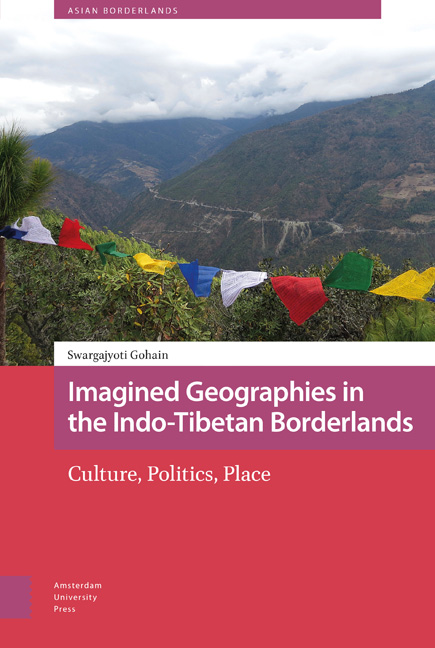Summary
In the early days of my fieldwork in July 2007, I was taking a stroll through the Bomdila town market when I found the narrow road blocked by a procession of people shouting slogans and holding banners that said, ‘Go Back, Refugees’. The next day, all the shops in the market remained closed. I probed, but drew blank responses from the shopkeepers and small traders, many of whom were Tibetans. The moment I broached the refugee issue, a shadow would cross their faces. Later, well into my fieldwork, when I raised questions about a Tibetan refugee problem in front of MARDC supporters, they brushed aside my concerns, saying it was a politicized affair, a ‘created’ issue by politicians in Itanagar, which had been popular between 1994 and 2003.
Tibetan refugees are a contentious subject in the regional politics of Arunachal Pradesh. In this chapter, I show how the Tibetan refugee issue crystallises the tension between the Monpas’ regional identity and their transnational affiliations, and introduces complications into the Himalayan imagined geography. The Monpas’ Tibetan connections also highlight how region and religion exercise competing influences in Monyul, which, in turn, manifest in the complex relationship between local Monpa communities and their Tibetan neighbours. In this discussion of Tibetan refugees, I am not pointing to Dharamsala where the Tibetan government-in-exile in India is based, or any of the other locations where sizeable chunks of the Tibetan exile community are resettled; rather, I specifically look at Monpa-Tibetan relations in Monyul.
Since the 1990s, a strident Arunachali regional identity movement, led by students and based on an opposition between indigenous tribal groups and non-tribal outsiders, has led to refugees becoming a contentious subject in the regional politics of the state. Arunachal is a tribal majority state, with a 68 percent tribal population; out of 60 total seats in the state assembly, 59 are reserved for tribal representatives. Along with the other groups of Arunachal Pradesh, Monpas are constitutionally classified as a Scheduled Tribe (ST). In principle, ST status does not denote that they are original inhabitants of India, but is instead associated with a constitutionally enumerated category (Béteille 1998; Xaxa 1999) that is supposedly ‘backward’ in relation to other Indian communities, and therefore entitled to affirmative action benefits (http://tribal.nic.in/Content/DefinitionpRrofiles.aspx; accessed 3 October 2011).
- Type
- Chapter
- Information
- Imagined Geographies in the Indo-Tibetan BorderlandsCulture, Politics, Place, pp. 167 - 200Publisher: Amsterdam University PressPrint publication year: 2020

